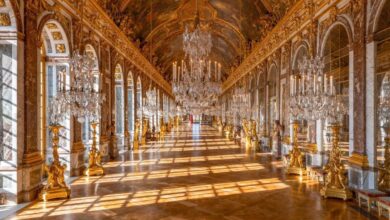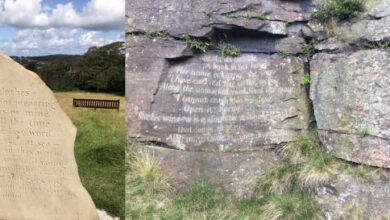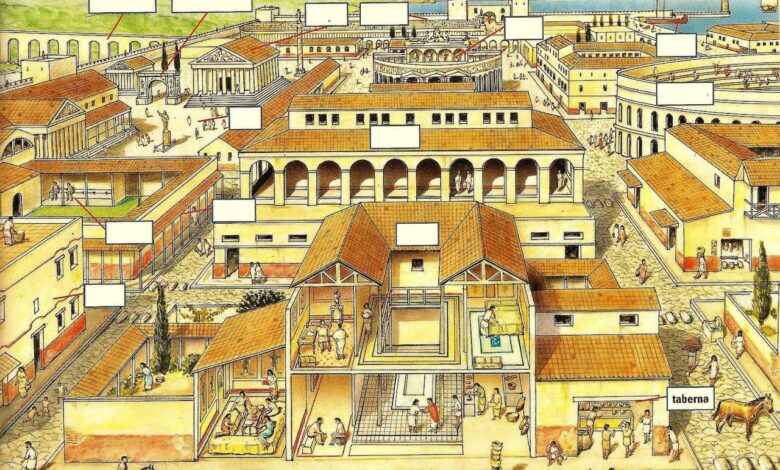
Ancient Towns and Second Cities A Deep Dive
Ancient towns and second cities, vibrant hubs of early civilizations, hold the key to understanding human development. This exploration delves into their origins, planning, social structures, economies, and eventual decline, offering a glimpse into the lives and legacies of those who built these remarkable settlements.
From the meticulously planned streets of Rome to the bustling marketplaces of ancient Mesopotamia, we’ll examine the common threads that connected these settlements across time and geography. We’ll compare and contrast their features, exploring how different cultures approached urban living, infrastructure, and governance. This journey through history will illuminate not only the past but also provide valuable insights into the challenges and triumphs of urban planning today.
Defining Ancient Towns and Second Cities
Ancient towns and second cities represent crucial stages in the development of human civilization, marking a shift from smaller settlements to more complex urban structures. They offer valuable insights into past societies, their economies, and their social interactions. Understanding these distinct urban forms allows us to appreciate the diversity and adaptability of human settlements throughout history.Ancient towns, fundamentally, were the precursors to larger, more developed urban centers.
They served as administrative, religious, and economic hubs for surrounding regions. Second cities, emerging later, often played a supporting role to primary urban centers, acting as important distribution points or regional capitals. The differences between these types of settlements often lie in their scale, function, and the historical context in which they arose.
Defining Ancient Towns
Ancient towns were relatively small settlements compared to modern cities, yet they held significant importance in their respective regions. They often developed around key resources, trade routes, or religious sites. Distinguishing them from villages or hamlets involved more sophisticated social structures, specialized labor, and a more developed economic base. For instance, the ancient Mesopotamian city-states like Ur and Uruk exhibited characteristics of ancient towns, with centralized governance, agricultural surplus, and artisan production.
Their organization differed significantly from purely agricultural villages. The growth of ancient towns was often a response to population increase, trade expansion, or the need for centralized administration.
Exploring ancient towns and second cities is fascinating, offering a glimpse into the past. However, modern advancements, like the recent American Cruise Lines agent portal launch, american cruise lines launches agent portal , are also shaping the travel industry. These new resources can make it easier to plan trips to those historical gems, providing valuable tools for agents and travelers alike.
Ultimately, the past and present blend seamlessly in our pursuit of exploring the world’s hidden treasures.
Defining Second Cities
Second cities are urban centers that rise in importance in the shadow of a primary, larger urban area. They typically emerge as a result of economic or administrative needs within a region. They often act as a secondary administrative center, or a hub for trade, industry, or specialized services. The development of second cities is intrinsically linked to the growth and complexity of the larger urban network.
For instance, during the Roman Empire, cities like Pompeii and Herculaneum served as secondary administrative and economic centers to Rome.
Evolution of Ancient Towns and Second Cities
The evolution of ancient towns and second cities is intricately tied to the broader historical context. Factors like agricultural advancements, trade networks, and political developments profoundly shaped their growth and decline. In regions with significant agricultural surplus, ancient towns emerged as centers for food storage, distribution, and craft production. Similarly, the rise of trade routes facilitated the growth of second cities as strategic points for commerce.
Regional Variations
The characteristics of ancient towns and second cities varied significantly across different geographical regions. In Mesopotamia, ancient towns often developed around irrigation systems, showcasing a strong connection between agriculture and urban growth. In contrast, ancient Greek city-states, like Athens and Sparta, exhibited a different pattern, emphasizing political and cultural prominence. Similarly, the development of second cities in the Roman Empire showcased a different model compared to ancient Indian urban centers.
The varying geographical, social, and economic conditions of these regions resulted in distinct urban forms.
Common Themes in Development and Decline
Common themes emerged in the development and decline of both ancient towns and second cities. Resource availability, trade networks, and political stability were critical factors influencing their prosperity. Natural disasters, disease outbreaks, and political conflicts could lead to the decline or abandonment of these settlements. A consistent pattern observed across many ancient societies is the link between urban development and environmental factors.
Comparison of Ancient Towns and Second Cities Across Eras
| Era | Ancient Towns | Second Cities |
|---|---|---|
| Early Bronze Age (3500-2000 BCE) | Mesopotamian city-states, Indus Valley settlements | Regional administrative centers within large empires |
| Classical Antiquity (800 BCE – 500 CE) | Greek poleis, Roman municipia | Roman provincial capitals, secondary trading hubs |
| Medieval Period (500-1500 CE) | European market towns, Asian trading ports | Regional administrative centers, craft production hubs |
| Early Modern Period (1500-1800 CE) | Colonial settlements, regional trading posts | Regional administrative centers, emerging industrial hubs |
Urban Planning and Infrastructure
Ancient towns and second cities, while vastly different in scale and purpose from modern metropolises, showcased remarkable ingenuity in urban planning and infrastructure development. Their designs, often reflecting the values and priorities of the time, laid the groundwork for future urban settlements. These settlements demonstrate a sophisticated understanding of how to create functional and sustainable environments, adapting to their surroundings and resources.The urban planning principles of these settlements were deeply influenced by geographical factors, local resources, and cultural beliefs.
Ancient towns and second cities often hold a unique charm, whispering tales of bygone eras. Their architecture, sometimes surprisingly modern for their age, often reflects the evolving needs and desires of the time. However, how did these communities, with limited modern communication, get their names and recognition? This question leads directly to the fascinating world of advertising and the pioneer otas, like those early online travel agencies.
advertising and the pioneer otas helped shape the travel industry and consequently, the way we perceive these historical places. Ultimately, understanding these early forms of promotion helps us appreciate the evolution of these ancient towns and second cities even more.
They often prioritized factors like water access, defense, and trade routes in their layouts. Furthermore, sanitation and waste management were crucial considerations, though the solutions varied greatly based on the specific location and resources available.
Urban Planning Principles
Ancient urban planning prioritized functionality and often reflected the societal structure. Grid layouts, while not universally employed, were used in some cities, particularly those with a focus on order and symmetry. Irregular patterns were also common, often reflecting the natural terrain or the growth of the city over time. The incorporation of defensive structures, like walls and moats, was a common feature in many settlements, emphasizing the importance of security and protection.
Infrastructure Systems
The infrastructure systems in ancient towns and second cities were often sophisticated for their time. Water supply systems, often employing aqueducts, canals, or wells, ensured a consistent water source for drinking, sanitation, and agriculture. Sanitation systems, while not always as advanced as modern ones, were crucial to public health. These often included public latrines, and rudimentary drainage systems.
Transportation systems varied depending on the geographical context, with roads, rivers, and seaports serving as vital arteries for trade and communication.
Examples of Urban Planning Features
The Roman city of Pompeii, buried by the eruption of Mount Vesuvius, offers a fascinating glimpse into the urban planning of the ancient world. The grid pattern, public baths, and impressive aqueducts highlight the sophistication of Roman urban design. Similarly, the ancient city of Mohenjo-daro in the Indus Valley Civilization is notable for its advanced sanitation and drainage systems.
Its meticulously planned streets and standardized housing blocks exemplify the sophisticated urban planning of the time. The layout of the ancient city of Petra, carved into the sandstone cliffs of Jordan, demonstrates an innovative approach to urban design, adapting to the natural environment.
Waste Disposal and Management
Waste disposal and management methods varied considerably between ancient settlements. Some cities, like Mohenjo-daro, employed sophisticated drainage systems to carry waste away from residential areas. Other cities might have relied on open areas or specific designated locations for waste disposal, which could lead to environmental challenges. In some cases, waste was collected and reused for fertilizer or other purposes.
The effectiveness of these methods varied depending on factors such as population density, available resources, and cultural practices.
Infrastructure Differences Between Ancient Towns and Second Cities
| Feature | Ancient Towns | Second Cities |
|---|---|---|
| Water Supply | Often relied on aqueducts, canals, or wells. Water availability was a significant factor in location and design. | Likely to draw water from existing sources, with increasing reliance on sophisticated aqueducts or other long-distance water conveyance systems as cities grew. |
| Sanitation | Rudimentary systems like public latrines and drainage channels were present in many. | Potentially more developed sanitation systems, with a growing need for large-scale waste management solutions. |
| Transportation | Roads, rivers, and seaports played crucial roles in trade and communication. | Similar to ancient towns, but with a potentially greater emphasis on infrastructure development for trade and communication networks, due to larger populations and trade volumes. |
| Scale | Generally smaller scale than second cities. | Larger scale, with a more complex infrastructure network. |
Social Structures and Governance: Ancient Towns And Second Cities
Ancient towns and second cities, hubs of burgeoning civilizations, were characterized by intricate social hierarchies and governance systems. These structures reflected the evolving needs and complexities of urban life, from basic resource management to the administration of justice. Understanding these systems allows us to appreciate the sophistication and resilience of these early societies.
Social Hierarchies and Structures
The social landscape of ancient towns and second cities was often stratified, with distinct classes possessing varying levels of power and privilege. Ruling elites, including kings, priests, and powerful merchants, held significant influence. Free citizens, artisans, and farmers comprised the middle classes, while slaves and other marginalized groups occupied the lowest rungs of society. The exact nature of these hierarchies varied considerably across different cultures and time periods.
For example, in some societies, priestly classes wielded immense power, while in others, military leaders dominated.
Political Systems and Governance Structures
Early political systems ranged from simple councils of elders to more complex monarchies and theocracies. These systems often reflected the prevailing cultural values and the specific challenges faced by the community. In some instances, city-states emerged, where urban centers exerted considerable autonomy. Other examples saw the development of empires, with powerful rulers extending their influence over vast territories.
The degree of centralization and the specific mechanisms of governance varied across civilizations.
Roles and Responsibilities of Different Social Classes
The roles and responsibilities of various social classes were closely tied to the prevailing economic and social structures. Ruling elites often held administrative and military roles, while artisans and merchants focused on production and trade. Farmers, in turn, played a crucial role in sustaining the urban population through agricultural output. The legal and religious roles were often concentrated in specific groups.
The responsibilities of different social classes were not static and evolved over time. For example, as trade expanded, merchant classes gained more influence, reshaping the balance of power.
Relationships between Urban Centers and Surrounding Rural Areas
The urban centers often depended on the surrounding rural areas for agricultural products and raw materials. This created a complex interdependence between the two spheres. Rural communities provided sustenance to the urban population, while urban centers provided markets for agricultural goods, craft products, and other services. This relationship was not always harmonious, with conflicts over resources and trade practices occasionally arising.
Table Summarizing Social Structures and Governance Models
| Civilization | Social Hierarchy | Governance Model | Urban-Rural Relationship |
|---|---|---|---|
| Ancient Mesopotamia | Kings, priests, merchants, farmers, slaves | Theocratic monarchy, city-states | Dependence on agricultural output, conflicts over resources |
| Ancient Egypt | Pharaoh, nobles, priests, scribes, farmers, laborers | Theocratic monarchy | Intense dependence on Nile River agriculture, centralized control |
| Ancient Greece (City-states) | Aristocrats, citizens, metics, slaves | Democracy, oligarchy, tyranny | Trade and dependence on surrounding regions, conflict between city-states |
Economic Activities and Trade
Ancient towns and second cities weren’t just places of residence; they were vital hubs of economic activity. Their success depended on a complex interplay of agriculture, craft production, and trade, which interconnected them with surrounding regions and further afield. The nature of these economies varied considerably based on location, resources, and the political landscape of the time.
Prevalent Economic Activities
The economies of these settlements were diverse and often intertwined. Agriculture, a cornerstone of survival, provided the basic necessities. Cultivation of crops like grains, fruits, and vegetables, and the raising of livestock, formed the bedrock of many communities. Simultaneously, specialized craft production flourished. Artisans created tools, pottery, textiles, and other goods, contributing to the economic fabric of these settlements.
Commerce, involving the exchange of goods and services, further fueled the prosperity of ancient towns and second cities.
Trade Networks and Routes
Trade networks were crucial for the exchange of goods and ideas. These networks stretched across land and water, linking distant settlements. Land routes, often along established paths or newly constructed roads, facilitated the movement of goods between neighboring communities and further afield. Waterways, rivers, and seas, played a vital role in long-distance trade, enabling the transport of bulkier commodities.
The development of these networks depended on factors such as political stability, geographical features, and the availability of resources.
The Role of Agriculture, Craft Production, and Commerce
Agriculture provided the foundation upon which other economic activities thrived. The surplus produced from agriculture allowed for the specialization of labor and the emergence of craft production. Artisans, in turn, created goods for both local consumption and trade. Commerce facilitated the exchange of these goods, connecting producers with consumers and expanding economic opportunities. The interplay between these three pillars—agriculture, craft production, and commerce—was essential to the success of ancient towns and second cities.
Examples of Specific Economic Practices
Specific economic practices varied considerably across different locations. In Mesopotamia, for example, the development of irrigation systems facilitated intensive agriculture, leading to surpluses and specialized crafts. The Indus Valley Civilization demonstrated advanced urban planning and trade, with evidence of standardized weights and measures, suggesting sophisticated commercial practices. In the ancient Mediterranean, maritime trade flourished, linking cities and fostering cultural exchange alongside the exchange of goods.
Exploring ancient towns and second cities often involves a deep dive into history and culture, but sometimes modern concerns like health advisories can impact travel plans. For example, as Zika spreads, travel agents are proactively redirecting babymooners to safer destinations ( agents redirect babymooners as zika spreads ), highlighting how global events can influence even the most traditional travel patterns.
Ultimately, these adjustments don’t diminish the allure of these historical gems, but rather add a layer of modern consideration to their exploration.
Economic Specialization of Ancient Towns and Second Cities
| Ancient Town/City | Primary Economic Activity | Supporting Activities | Notable Trade Items |
|---|---|---|---|
| Miletus (Ancient Greece) | Maritime trade | Shipbuilding, fishing, agriculture | Grain, wine, olive oil, textiles |
| Teotihuacan (Mesoamerica) | Agriculture, craft production | Trading of obsidian, pottery, textiles | Obsidian tools, pottery, jade ornaments |
| Chang’an (Ancient China) | Silk production, trade | Agriculture, craft production | Silk, porcelain, tea |
Cultural and Religious Aspects
Ancient towns and second cities were vibrant hubs of cultural and religious activity. The intertwining of faith, art, and daily life profoundly shaped their architecture, social structures, and overall character. Religious beliefs and practices often dictated the layout of cities, with temples, shrines, and sacred spaces playing pivotal roles in the urban fabric. The artistic expressions of these societies provide valuable insights into their values, aesthetics, and worldviews.The religious and cultural landscapes of these ancient urban centers were diverse and complex.
From elaborate rituals and ceremonies to intricate artistic creations, they offer a window into the past, illuminating the lives and beliefs of the people who inhabited them. Understanding these aspects allows us to appreciate the rich tapestry of human experience across different eras and civilizations.
Religious Beliefs and Practices
Religious beliefs and practices varied significantly across different ancient towns and second cities. Many civilizations worshipped a pantheon of gods and goddesses, often associated with natural forces or human activities. Rituals and ceremonies were crucial to maintaining harmony with the divine and ensuring prosperity. For instance, the ancient Egyptians meticulously followed complex rituals surrounding death and the afterlife, as evidenced by elaborate tombs and funerary practices.
In contrast, the ancient Greeks often held festivals and games in honor of their gods, showcasing the integration of religious beliefs with social and recreational activities.
Artistic Expressions and Cultural Traditions
Ancient urban centers fostered a wide array of artistic expressions. From intricate pottery and sculpture to monumental architecture and sophisticated painting techniques, these forms of artistic expression reflect the cultural values and beliefs of the time. For example, the Greeks excelled in sculpture, creating iconic representations of human form and mythological figures. The development of writing systems allowed for the recording of myths, legends, and historical events, preserving cultural traditions and knowledge for future generations.
These artistic expressions, whether religious or secular, provided a window into the minds and sensibilities of the ancient communities.
Role of Religion in Shaping the Urban Landscape, Ancient towns and second cities
Religion significantly influenced the urban landscape. Sacred spaces, such as temples, shrines, and holy sites, often formed the focal points of ancient cities. The layout and design of these spaces often reflected the religious beliefs and practices of the inhabitants. The placement of temples, the size and style of shrines, and the intricate details of sacred monuments reveal the importance of religious institutions in the urban context.
For instance, the layout of the Roman Forum was closely tied to religious ceremonies and political activities.
Forms of Entertainment and Leisure Activities
Ancient towns and second cities provided opportunities for entertainment and leisure activities. Public gatherings, festivals, and games were common occurrences, fostering social interaction and community spirit. The form and content of these activities reflected the social values and beliefs of the time. For example, the Olympic Games in ancient Greece were a major religious and athletic event, showcasing the integration of sport, religion, and civic pride.
Other forms of entertainment, such as theatrical performances, storytelling, and music, enriched the cultural tapestry of these ancient urban centers.
Religious and Cultural Diversity Table
| Ancient Town/City | Dominant Religion(s) | Key Artistic Expressions | Cultural Traditions | Forms of Entertainment |
|---|---|---|---|---|
| Ancient Egypt | Polytheistic, focus on afterlife | Pyramid construction, elaborate tomb paintings | Mummification, hieroglyphics | Music, dance, theatrical performances |
| Ancient Greece | Polytheistic, emphasis on mythology | Sculptures, pottery, architecture | Festivals, athletic competitions | Plays, poetry recitals |
| Ancient Rome | Polytheistic, state religion | Architecture, mosaics, sculptures | Public baths, gladiatorial contests | Chariot races, theatrical performances |
| Ancient Mesopotamia | Polytheistic, ziggurats | Cuneiform writing, cylinder seals | Epic poems, elaborate rituals | Music, storytelling |
Decline and Legacy
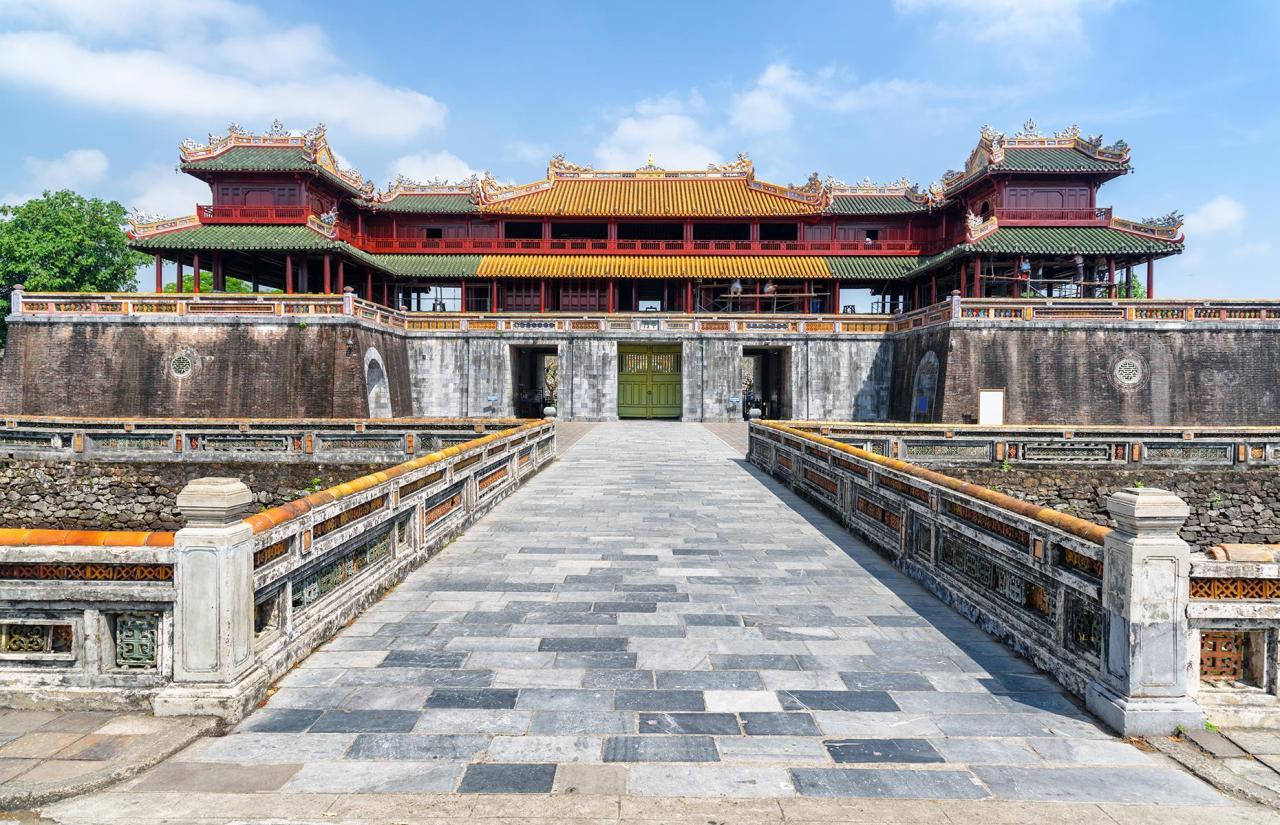
The stories of ancient towns and second cities are not just about their rise to prominence, but also their eventual decline. Understanding the factors that led to their fall provides valuable insights into the complexities of human civilization and the resilience of societies. This chapter delves into the reasons behind their decline, exploring the lasting impact they had on subsequent civilizations, and examines archaeological evidence that illuminates these fascinating periods.The fate of these settlements often involved a complex interplay of environmental pressures, political instability, economic shifts, and societal changes.
The study of their decline, therefore, offers a nuanced perspective on the factors that contribute to the rise and fall of civilizations.
Factors Contributing to Decline
Various factors contributed to the decline of ancient towns and second cities. Environmental pressures, such as droughts, floods, or soil erosion, could severely impact agricultural production, leading to food shortages and societal unrest. Political instability, including conflicts, invasions, and power struggles, often resulted in widespread destruction and displacement. Economic downturns, trade disruptions, and the rise of competing settlements also played a significant role.
Changes in social structures, such as the emergence of new elites or the decline of traditional institutions, could further destabilize existing systems.
Lasting Impacts and Legacies
Ancient towns and second cities left an indelible mark on subsequent civilizations. Their architectural innovations, sophisticated urban planning, and advanced infrastructure often served as models for later settlements. Cultural traditions, religious beliefs, and artistic expressions that originated in these centers frequently spread and influenced surrounding regions. The transmission of knowledge, technological advancements, and trade routes established by these settlements also shaped the trajectory of subsequent civilizations.
Archaeological Discoveries
Archaeological excavations offer invaluable insights into the lives and experiences of those who inhabited ancient towns and second cities. Discoveries of buried settlements, remnants of infrastructure, and artifacts provide tangible evidence of their social structures, economic activities, and cultural practices. For example, the uncovering of intricate water management systems in ancient Mesopotamia demonstrates the advanced engineering capabilities of the time.
The discovery of sophisticated pottery or jewelry sheds light on their artistic traditions and trade networks. These finds allow us to piece together the intricate tapestry of their existence and understand the factors that influenced their rise and fall.
Modern-Day Cities Influenced by Ancient Urban Patterns
Many modern-day cities exhibit the enduring influence of ancient urban patterns. The layout of cities, the use of specific building materials, and even certain cultural practices can trace their roots back to ancient settlements. For instance, the Roman influence is evident in the urban planning of many European cities, with their use of grids, aqueducts, and public spaces.
The legacy of ancient Mesopotamia’s advanced irrigation systems is also reflected in modern water management techniques. These examples underscore the lasting impact of ancient urban centers on the development of modern societies.
Table: Causes of Decline in Different Ancient Towns and Second Cities
| Ancient Town/City | Primary Cause of Decline | Secondary Causes |
|---|---|---|
| Minoan Knossos | Volcanic Eruption and Earthquakes | Political instability, social unrest, trade disruptions |
| Harappa | Environmental degradation, climate change | Social inequality, leadership failures, external pressures |
| Teotihuacan | Environmental factors (droughts, deforestation), political instability | Economic hardship, population decline, social unrest |
| Rome | Political instability, economic crisis, barbarian invasions | Overexpansion, corruption, infrastructure decay |
Modern Interpretations and Applications
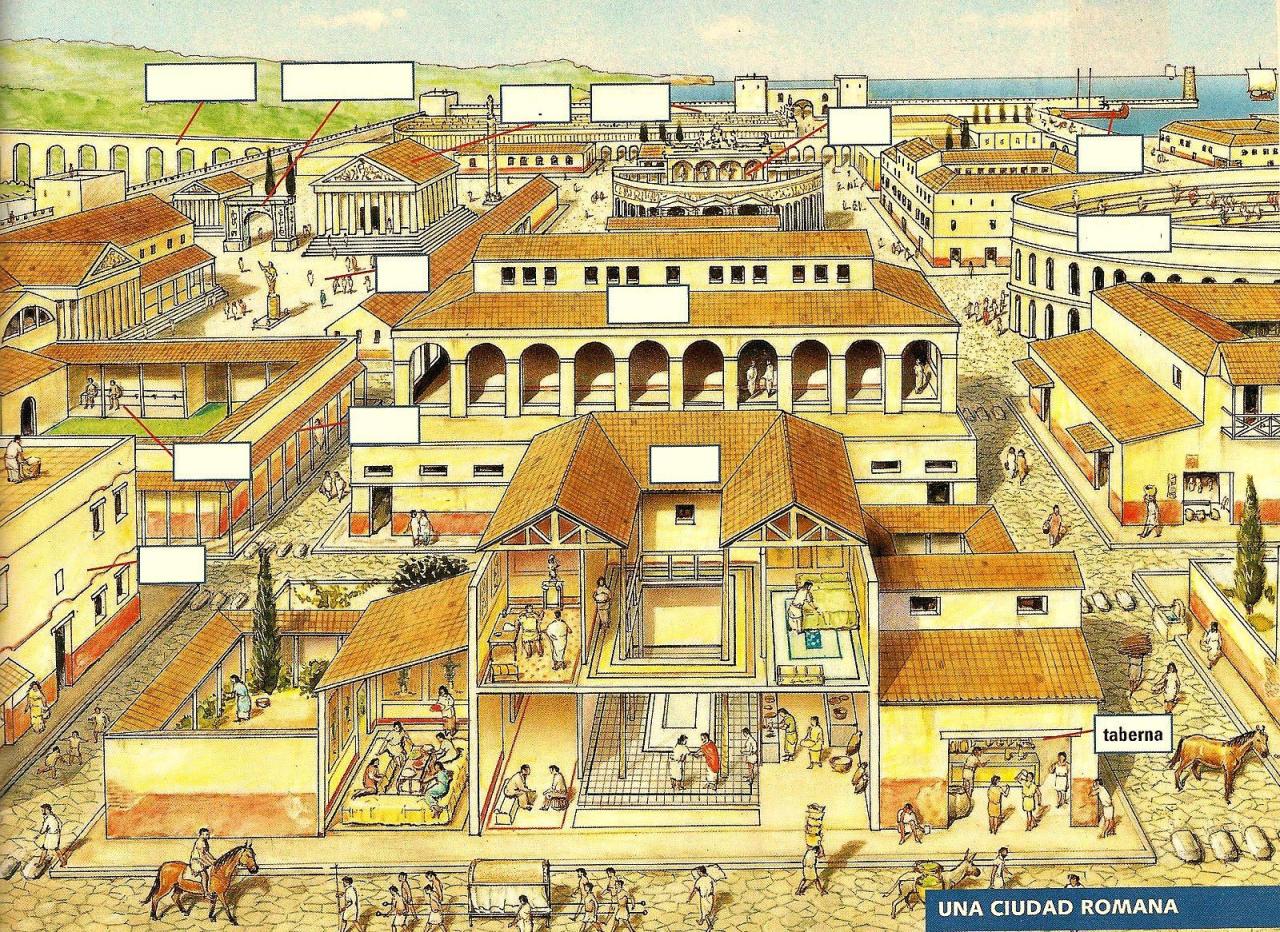
Delving into the remnants of ancient towns and second cities offers a unique opportunity to glean valuable insights into past urban planning and societal structures. These insights, when analyzed through a modern lens, can significantly inform contemporary urban development. Understanding how ancient civilizations addressed challenges like resource management, sanitation, and social organization provides a wealth of knowledge applicable to modern urban planning strategies.The study of ancient settlements is not merely an academic exercise; it’s a powerful tool for navigating the complex issues facing modern cities.
Ancient towns and second cities often boast a fascinating blend of history and modern development. Think about the intricate planning and resources needed to construct such places. However, recent news of Aker halting delivery of building materials for an NCL ship ( aker halts delivery of building materials for ncl ship ) highlights the complex supply chains that underpin even the most modern projects.
This disruption, though focused on a single ship, serves as a reminder of the delicate balance between historical preservation and modern construction, especially when it comes to large-scale projects like those in ancient towns and second cities.
By examining how past societies thrived or declined, we can identify potential pitfalls and innovative solutions for contemporary urban problems. This historical perspective empowers us to make more informed decisions about the future of our cities, drawing upon the wisdom and experiences of civilizations long gone.
Relevance to Modern Urban Planning
The study of ancient urban planning principles offers a rich source of inspiration and lessons for contemporary urban design. Ancient cities often demonstrate remarkable feats of engineering and social organization, showcasing how to balance population density with resource availability. The layout of streets, the positioning of public spaces, and the provision of infrastructure like aqueducts and sewage systems can be invaluable case studies for modern city planners.
Ancient towns and second cities often hold a unique charm, with layers of history whispering through their cobblestone streets. Thinking about how tourism in these areas is changing, like how Alamo is expanding its reach with a second Waikiki location, alamo opens second waikiki location shows how businesses adapt to changing demands. Ultimately, the evolution of these spaces, whether ancient or modern, is fascinating to observe.
Modern urban planning can benefit greatly from the insights gained by studying how these civilizations addressed similar challenges in their time.
Examples of Applied Lessons
Ancient Roman aqueduct systems, for instance, demonstrate sophisticated water management techniques that remain relevant in arid or water-stressed regions today. Their methods of supplying clean water and distributing it effectively are still studied and adapted by engineers and planners in contemporary urban design. Similarly, the grid-like street patterns of many ancient Greek cities, designed for ease of movement and trade, are still influential in modern urban planning.
The concept of zoning, a key aspect of modern urban development, can be traced back to ancient cities where different residential and commercial zones were established.
Interpreting Ancient Settlements
Several approaches can be used to interpret the remains of ancient settlements. Archaeological excavation, meticulous analysis of artifacts, and historical records are crucial components. Careful consideration of the geographical context, including climate, topography, and available resources, is also important. Furthermore, integrating ethnographic studies to understand the social structures and daily lives of the inhabitants can provide a richer understanding of the past.
By combining these diverse approaches, we gain a more complete picture of the settlement’s purpose, function, and significance.
Preserving Cultural Heritage
Preservation of ancient sites and artifacts is crucial for maintaining cultural heritage. Conservation strategies should consider the environmental impact and the need to balance preservation with accessibility for visitors. Employing sustainable and ethical excavation techniques is vital to minimize damage to the site. Public awareness campaigns and educational programs can raise public appreciation for these historical treasures, fostering a sense of responsibility and promoting their longevity.
Innovative approaches, such as digital documentation and 3D modeling, allow for wider access to the past and provide valuable tools for conservation efforts.
Comparison of Ancient and Modern Urban Principles
| Aspect | Ancient Urban Principles | Modern Urban Planning Approaches |
|---|---|---|
| Water Management | Sophisticated aqueducts, efficient water distribution systems (e.g., Roman aqueducts). | Modern water treatment plants, sustainable water management techniques, and smart irrigation systems. |
| Infrastructure | Well-planned roads, public squares, and sewage systems (e.g., Roman cities). | Modern transportation networks, efficient public transit systems, advanced waste management solutions. |
| Social Structures | Distinct social classes, hierarchical structures, and public spaces for gatherings. | Social equity, community engagement, mixed-use developments, and inclusive urban design. |
| Economic Activities | Trade routes, specialized workshops, and marketplaces (e.g., ancient Greek cities). | Economic diversification, sustainable business models, and creation of job opportunities. |
Last Recap
In conclusion, ancient towns and second cities offer a fascinating window into the past. Their enduring legacy, from their advanced infrastructure to their sophisticated social structures, continues to inspire and inform modern urban planning. By studying these settlements, we gain a deeper appreciation for the ingenuity and resilience of past civilizations and can potentially learn valuable lessons for shaping a more sustainable and prosperous future.
FAQ
What distinguishes a “second city” from a primary city?
A second city often refers to a significant urban center that developed in close proximity to a larger, dominant city, serving complementary roles and functions. They may specialize in specific industries or act as administrative or trading hubs, supporting the larger metropolitan area.
What were the common methods of waste disposal in ancient cities?
Waste disposal varied significantly across ancient cities. Some employed rudimentary sewer systems, while others relied on open dumps or designated areas outside the city walls. The methods often depended on the resources and available technology of the specific location.
How did the environment impact the development of ancient urban centers?
The availability of resources like water, fertile land, and defensible locations played a crucial role in the location and development of ancient urban centers. Environmental factors, like flooding or drought, could also impact their growth and decline.
How did trade influence the growth of ancient second cities?
Trade routes often played a pivotal role in the growth of second cities. These cities frequently developed as important hubs for trade and commerce, facilitating exchanges between the primary city and surrounding regions.




